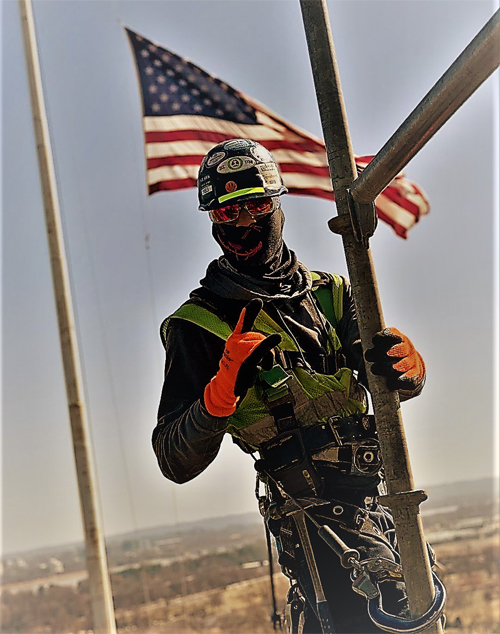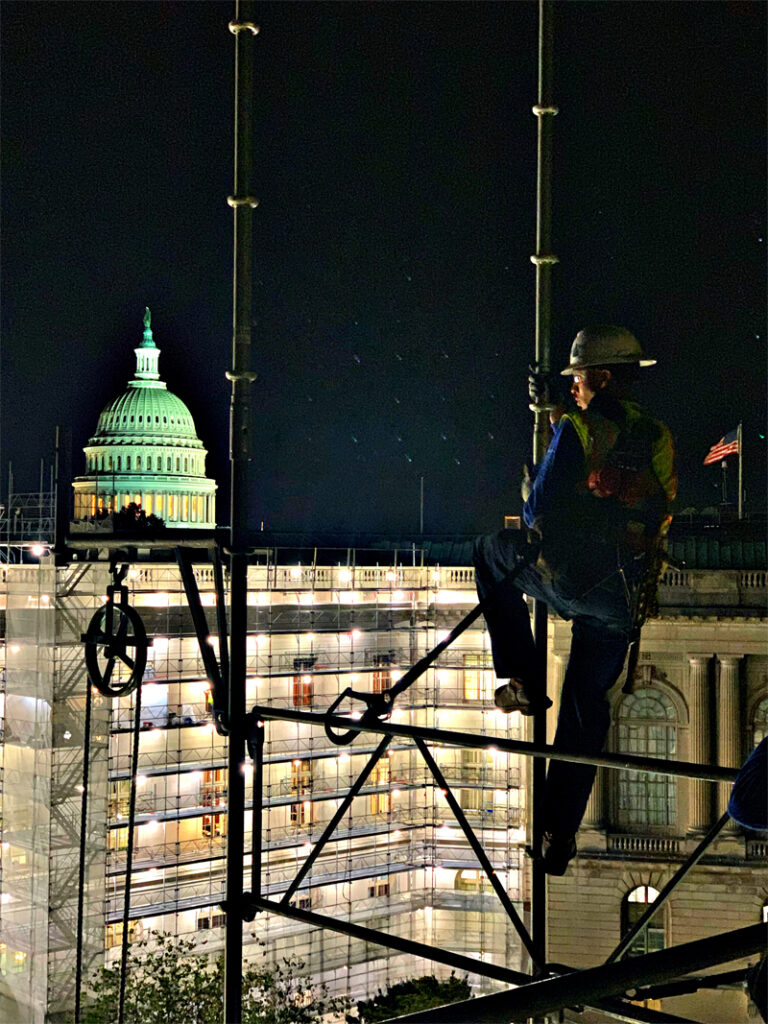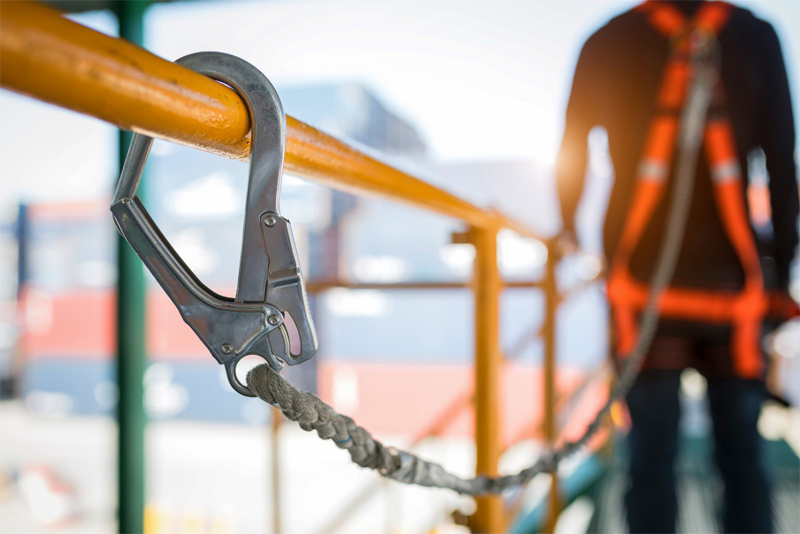The Occupational Safety and Health Administration (OSHA) imposes mandatory scaffolding regulations that companies must follow. State governments can also introduce additional localized laws to strengthen safety protocols when needed.
Scaffolding regulations at the federal and state levels tend to change over time as new legislation passes. As such, employers must actively stay on top of the evolving regulatory updates.
These rules cover all aspects of scaffolding work—from the physical construction and design to determining who provides training for employees working at height.
Read on to learn more about the latest scaffolding guidelines as of 2024.

There are several important scaffolding design guidelines and safety rules that pertain to working on a scaffold:
These requirements for scaffolding safety come directly from OSHA standards.
Scaffolding systems need to be designed and built in a certain way to be deemed safe. Different regulations apply to different types of scaffolding systems, such as supported scaffolds versus suspension platforms. However, the general premise is to ensure the structure that is installed and is being used by workers is secure and safe.
In most circumstances, OSHA requires guardrail installation on supported scaffolds at heights over 10 feet. Install guardrails between 38 and 45 inches high and place the midrails at about half that height.
When used to support the top rail for the guardrail, cross bracing should reach the required height of between 38 and 45 inches. Do not build the top rails on guardrails from steel or plastic banding. It should be sturdy enough to stop a fall.

Planking installed on a scaffold must support at least four times its intended load, plus its own weight, without failure. It shouldn’t deflect more than 1/60 of its length between supports. You should build working platforms from solid wood or fabricated planks.
Do not overload the platform with more than its intended loading capacity. Avoid extending working maximum heights by climbing guardrails or using boxes or ladders on the platform.
You must use guying, ties, or other restraints when the scaffolding height-to-base ratio exceeds 4:1 to prevent it from tipping.
Install restraints every 20 vertical feet for widths less than three feet or 26 feet for widths over three feet. Install horizontal braces at each end and no more than 30 feet apart from one end.
The O.S.H.A required “factor of safety” for scaffolding design capacity is that a scaffold component and structure needs to support a minimum of four times(4X) the intended load. All workers, materials, and equipment placed upon the scaffold must never exceed the intended load or maximum capacity, whichever is lower.
Given the risks associated with working on scaffolds, keeping them well-maintained at all times is important. Be sure to wash them down after each job and inspect the scaffolding” for broken or damaged components.
Frequent inspections are central to maintenance and the safe use of scaffolding. A “Competent Person” as defined in the O.S.H.A. standards must inspect the scaffold at the start of every shift. They must also recheck it if anything happens that might weaken its structure. Always inspect the scaffold thoroughly after it’s moved or damaged to ensure its safety.

A qualified “Competent Person” is someone who has received the training and education needed to perform specific tasks. This usually means they have earned a certification validating their knowledge and skill in scaffold building.
Pedestrian Safety/Object Protection Safety
Protect bystanders and objects below with multiple layers of defense. Barricades clearly demarcate the danger zone, while overhead canopies or debris netting directly stop falling materials. This layered approach prioritizes both worker and public safety.
There are four common scaffolding safety failures that you should be aware of:
The best way to clean/wash a scaffold is to have all the components disassembled and on the ground. Use a pressure washer to remove dirt, debris, grease, or cement splashes. Use a mild soap or degreasing agent to remove tricky oils or grease. Never use harsh chemicals that could eat away at the integrity of the metal.
Ensure the pressure washer is at a low setting to avoid damaging components such as the scaffold boards or wooden planks. Cleaning an undismantled scaffold requires extreme caution. During pressure washing, pay close attention to prevent loosening or disengaging any components, as this could compromise safety.
Individuals working at height are just as responsible for their safety as their employers. That said, there are some items that employers must provide for their employees to ensure their safety.
Workers at heights over 10 feet must use a fall arrest system or guardrails. OSHA regulations require that one or two-point suspension scaffolds have both.
However, we recommend using guardrails and/or fall arrest systems when working over 6 feet up. You should also implement toeboards and/or debris netting to shield individuals and objects below from falling materials. Furthermore, secure all tools that could fall using tool tether lanyards.

Personal fall protection systems include harnesses, belts, snap hooks, lifelines, D-rings, and anchorage points. State laws may require additional personal protective equipment (PPE). It is typically the employer’s responsibility to provide that equipment.
Employees must wear hard hats while on the worksite to protect them from falling objects, such as tools, debris, etc. In addition, OSHA standards require the installation of toeboards, screens, nets, or barricades to catch falling items.
A qualified person must train employees on the hazards of working at height and the procedures to mitigate those risks. A competent person must also train those who assemble, move, repair, maintain, inspect, or operate scaffolds.
Employers must retrain employees who they feel lack the proficiency or knowledge to work safely. Retraining is also required if no training has occurred after changes have been made to the worksite.
Of course, this is just a sampling of many scaffolding safety guidelines. Many more rules apply to specific types of scaffolds (such as suspension systems or aerial lifts). Other regulations govern access methods and requirements for employees dismantling or erecting a scaffold.
Maintaining compliance with these standards is often a matter of industry expertise. Contractors specializing in scaffolding design and erection tend to be current on these laws and regulations.

